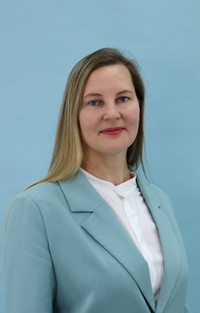Вам может быть интересно:
Архив журнала
Роль двигательного анализатора в развитии ребенка со стертой дизартрией
- 1060
- Рубрика: ИЗУЧЕНИЕ И ОБРАЗОВАНИЕ ЛИЦ С ОГРАНИЧЕННЫМИ ВОЗМОЖНОСТЯМИ ЗДОРОВЬЯ
- Файл статьи: PDF
Аннотация: Современное изучение проблемы дизартрии, в том числе стертой дизартрии, взаимосвязано с изучением нарушений двигательной сферы человека и многоаспектно определяется междисциплинарными исследованиями в области медицины, психологии, лингвистики, педагогики и логопедии. В статье рассматривается роль двигательного анализатора в развитии детей дошкольного возраста со стертой дизартрией с учетом анализа уровневой организации движений (по Н. А. Бернштейну). Обращается внимание на то, что патология двигательного звена у дошкольников данной категории вызывает специфические нарушения двигательно-моторной организации деятельности. Отмечено, что неоднородность симптомов нарушений двигательной сферы у детей со стертой дизартрией обусловлена действием различных механизмов, которые необходимо выявлять и учитывать при организации коррекционно-педагогического воздействия. Анализ сложного взаимодействия кинестетической и кинетической основы движений, различных уровней организации двигательного акта и видов ориентировок является важным условием успешности формирования произвольных двигательных навыков у детей со стертой дизартрией. Авторы раскрывают понятия «двигательная сфера», «координационные способности», «пространственные представления и ориентировки», «кинестетическая и кинетическая основа движений», обращают внимание на необходимость оценки развития невербального и вербального факторов анализа пространственной информации, значимых для осуществления двигательных действий ребенка и развития его речи.
Ключевые слова: двигательные анализаторы; стертая дизартрия; уровневая организация движений; нарушения двигательной сферы; дошкольники; дошкольная логопедия; нарушения речи; дети с нарушениями речи.
Abstract: The modern study of the problem of dysarthria, and specifically trite dysarthria, is associated with the investigation of the human motor sphere disorders and has a multifaceted definition worked out in interdisciplinary research in the field of medicine, psychology, linguistics, pedagogy and logopedics. The article looks at the role of the motor analyzer in the development of preschool children with trite dysarthria taking into account analysis of the level-based organization of movements (according to N. A. Bern-shtein). The article stresses that pathology of the motor sphere in preschoolers of this category brings about specific disorders of the motor skills activity organization. It is noted that inconsistency of the symptoms of the motor sphere disorders in children with trite dysarthria is caused by simultaneous functioning of various mechanisms which are to be revealed and taken into account while organizing rehabilitation-pedagogical intervention. The analysis of comprehensive interaction between the kinesthetic and kinetic movement bases, various levels of organization of the act of movement, and the kinds of motivations is an important condition of successful formation of arbitrary motor skills in children with trite dysarthria. The authors explain the notions of “motor sphere”, “coordination competencies”, “ideas about space and location”, “kinesthetic and kinetic bases of movements”, and pay attention to the need to assess the development of the non-verbal and verbal factors of analysis of spatial information significant for the performance of movements by the child and the development of their speech.
Key words: motor analyzers; trite dysarthria; level-based organization of movements; motor sphere disorders; preschoolers; preschool logopedics; speech disorders; children with speech disorders.


